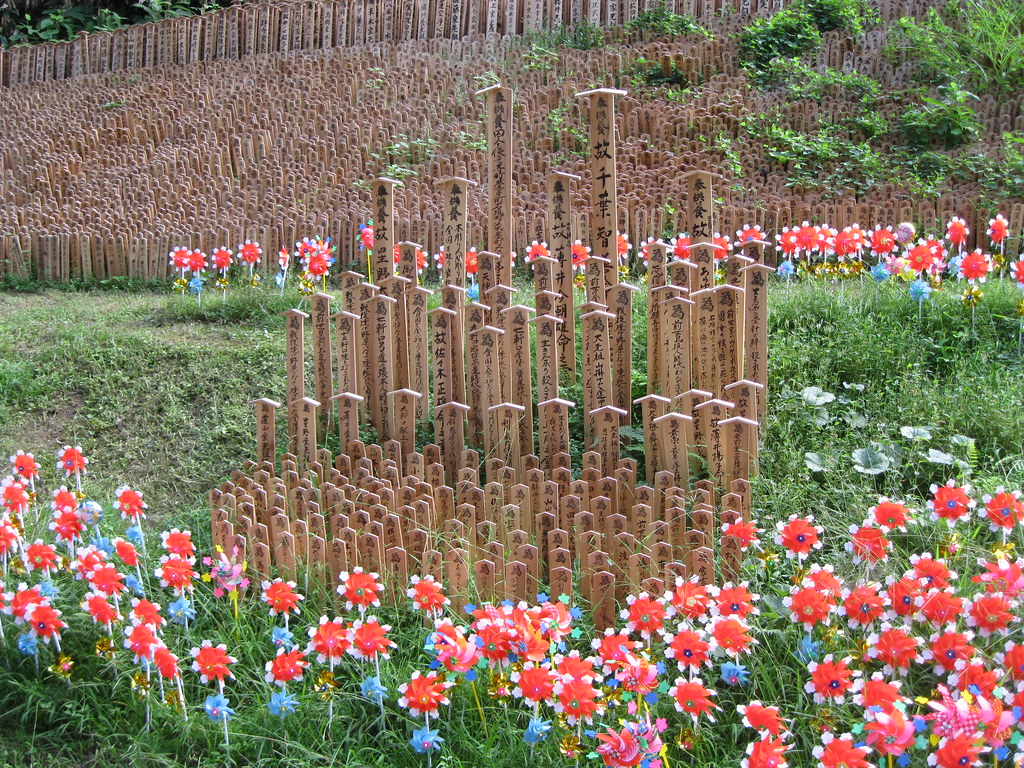#dewa sanzan
Text
but if you see only one photo from my trip to Yamagata, it should be this one. when I first started climbing Hagurosan, it really did feel like I'd stepped across the threshold to another world.

#you walk through that gate and you really do feel like something intangible has shifted and you're in a slightly different world#and that's truly the point of the whole pilgrimage#japan#the travel bug#yamagata#dewa sanzan
44 notes
·
View notes
Text
"Morning, and on the road east to Mt. Haguro and the rest of the Dewa Sanzan our rental cut a path across the broad plain carpeted with rice fields - a buffer zone between urban and spiritual worlds. To the north, the great bulk of Mt. Chokai in the distance marked the border with Akita Prefecture."
https://www.city-cost.com/blogs/City-Cost/z82JW
#travel#mountains#japan scenery#japan travel#japan blogs#yamagata#dewa sanzan#asia#japanese culture#road trip#life in japan#tumblr japan#journey#discover japan#japan aesthetic#japantrip
5 notes
·
View notes
Text
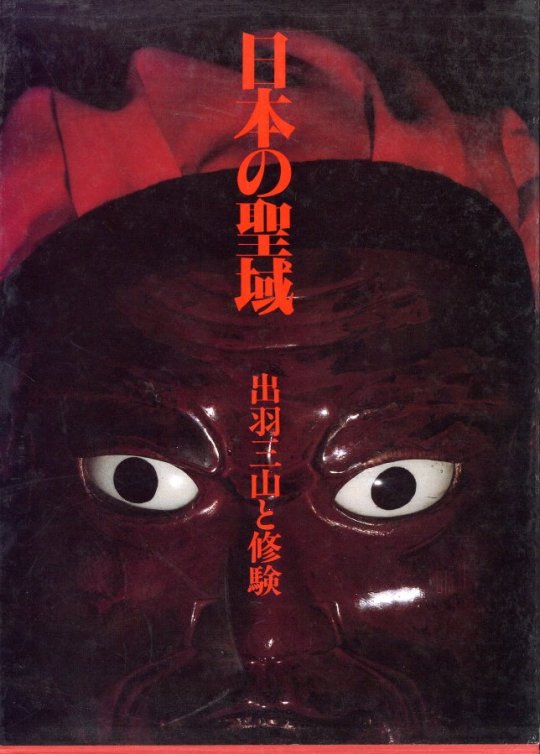
Cover for Sanctuary of Japan Volume 9 Dewa Sanzan and Shugendo
Masatoshi Naito Fumi : Yasuaki Togawa
the publisher Kosei Publishing Co., Ltd.
Publication year 1982
Komiyama Books
#Shugendo#Yasuaki Togawa#Kosei Publishing Co.#Publication year 1982#Komiyama Books#photography#books#book cover
87 notes
·
View notes
Text
Misty path to Dewa Sanzan temples, Japan
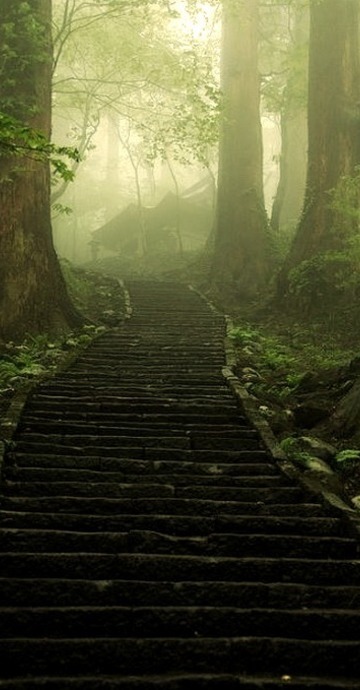
1 note
·
View note
Text
Valério Lima é um Sensei brasileiro, filósofo, especialista em Acupuntura, pela Associação Brasileira de Acupuntura - ABA e Doutor Honoris Causa em Medicina Oriental.
É um dos poucos ocidentais a estudar com os grandes mestres da Medicina Tradicional Japonesa como: Renpu Fujimoto, Katsumi Ishihara, Koei Kuwahara, Etsuko Inoue, Masanori Taniyoka, Masaki Tsuda, Keiko Ogawa, Oura Jinkan, Atsuki Maeda, Stephen Birch e Antônio Augusto Cunha.
Em suas inúmeras viagens para o Japão, teve a oportunidade de se iniciar nas práticas ascéticas do shugendô, nas montanhas sagradas de Dewa Sanzan, recebendo o nome japonês de Chi Shu, aquele que ensina com sabedoria, tornando-se o primeiro yamabushi brasileiro.
Fundador e CEO do Instituto Kangendo, maior instituição de terapias japonesas da América do Sul, possui alunos espalhados pelo Brasil, Chile, Colômbia, Peru, França, Portugal, Austrália e Japão.
Idealizador da viagem “Espírito do Japão”, que leva o mesmo nome desta obra, que tem como objetivo o intercâmbio cultural e educacional entre Brasil e Japão. O sensei Lima é membro da JTAM´S (The Japan Traditional Acupuncture and Moxibustion Society) e da Shonihari Gakkai (The Japanese Society of Pediatric Acupuncture) e também criador dos métodos de Shiatsu Kangendô e Ventosaterapia Kengendô.
Valério acaba de lançar o seu livro de estreia O Espirito do Japão – Uma Jornada pela Acupuntura Japonesa editado pela Ícone Editora.
A agenda de lançamento é extensa. No mês de outubro e novembro, Valério participou de feiras e congressos no Japão onde fez o primeiro lançamento oficial. De volta ao Brasil, participou de um workshop no Rio de Janeiro, onde lançou o livro e tem agenda para os próximos dias 16 de dezembro, em Goiânia, no Instituto Kangendo, dia 17 de dezembro, em Brasília e em janeiro de 2024 terá sua agenda confirmada para São Paulo.
Nesse livro, Valério retrata de forma apaixonada sua trajetória de neófito na medicina oriental à sensei nas artes japonesas de cura, apresentando todo o percurso trilhado ao longo dos anos de imersão na medicina oriental, especialmente as terapias, nas artes marciais e práticas espirituais legitimamente japonesas.
O livro apresenta de forma precisa uma viagem pela seara da acupuntura e da medicina tradicional japonesa, seus conceitos, princípios, filosofia, técnicas e principais estilos praticados no Japão, descrevendo a moderna acupuntura e moxabustão japonesa a partir de aspectos históricos, culturais e espirituais, sob uma perspectiva integral. Apresenta também as singularidades que diferem o estilo japonês de acupuntura dos demais praticados no mundo, demonstrando tanto as bases que fazem da acupuntura japonesa a mais refinada, indolor e não invasiva praticada na atualidade, assim como sua lapidação e evolução ao longo dos 1.000 anos de história.
A acupuntura é uma terapia segura e eficaz para uma variedade de condições e no Japão, a acupuntura é uma prática médica reconhecida e regulamentada pelo governo. Segundo uma pesquisa realizada pelo Ministério da Saúde, Trabalho e Bem-Estar do Japão em 2022, 71,6% dos japoneses conhecem a acupuntura e mais de 30% da população já usaram a acupuntura alguma vez na vida. Os principais motivos pelos quais os japoneses procuram a acupuntura são para tratar dor (42,3%), estresse (26,8%) e problemas de sono (21,7%).
Valério reforça a importância da disseminação da prática da acupuntura, sua importância no tratamento medicinal e apresenta as técnicas adquiridas ao longo de anos de experiência e práticas da medicina tradicional em seu livro, palestras, cursos e em congressos que participa.
Ficha Técnica:
Ícone Editora
Diretora Editorial: Tatiana Fanelli
Assessor de Comunicação: Luiz Asts
Contato: +55 11 95594-5813
0 notes
Text
Misty path to Dewa Sanzan temples, Japan

0 notes
Text
Misty path to Dewa Sanzan temples, Japan

0 notes
Photo

Misty path to Dewa Sanzan temples, Japan
0 notes
Text
Misty path to Dewa Sanzan temples, Japan
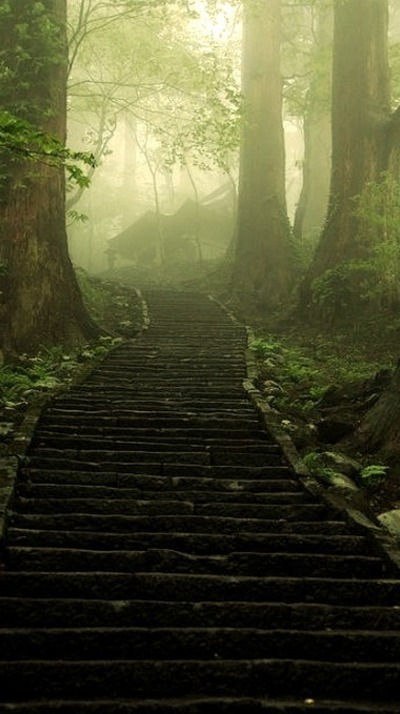
0 notes
Photo

Déjeuner végétarien au mont Haguro
Au sommet du mont Haguro, l’une des trois montagnes sacrées de Dewa Sanzan, le sanctuaire Sanjingo-saiden mets les petits plats dans les grands plats pour servir une excellente cuisine végétarienne. Tous les produits sont issus de la forêt environnante et de petits producteurs locaux. Après l’ascension spirituelle de la montagne, vous pourrez gouter à cette merveilleuse gastronomie traditionnelle.
0 notes
Text
yamagata (part three)
or The Final Part.
A continuation of this post and this post.
After a night at an onsen town and a night at a shukubo pilgrim lodging, we were finally going to the Dewa Sanzan.
I'd planned two days for this, but well. Hail happened. lmao. So we ended up going to Hagurosan, the Dewa Sanzan museum, the Shugendō museum, and Dainichibou and then just driving around Gassan and Yudonosan. ;; Tragedy. I guess I just wasn't pure enough yet, lmao. Maybe one day.
Anyway, time for Hagurosan.
(Note: please keep in mind that most temples and shrines in Japan allow exterior photography but no interior photography. So that's been respected in this post.)
So the Dewa Sanzan are three sacred mountains that the yamabushi climb regularly. Other pilgrims (particularly Buddhists) also climb these mountains, but typically don't take the same rugged trails that the yamabushi do. The idea is that you climb Hagurosan, then Gassan, then Yudonosan. You're kind of embarking on a metaphorical journey through the present, past, and future, or birth, death, and rebirth. By the time you've gotten to Yudonosan, you need to go barefoot and you're not even allowed to speak of what the object of worship is.
(I know what it is, but... no, I shan't say it.)
These days, though, mostly only hikers and serious pilgrims do the whole climb. Gassan in particular is a pretty hazardous climb, and it's closed off for most of the year unless you're a yamabushi.
You can climb parts of it (like I did) or just drive to the shrines on Hagurosan and Yudonosan. Some parts you can only see by hiking, which is why I chose to hike a little bit of it. Not even almost all of it, though. lmao. Just a couple hours' worth.
I started with Hagurosan. It's the first of the three mountains and was right near our shukubo. (That's why there's basically a whole city of shukubo and former shukubo there. Pilgrims who climbed the three mountains.) Now, a lot of people will only climb Hagurosan. It's the only one of the three mountains that's open year-round, so there's actually a shrine there that enshrines all three mountains. In other words, you can just go to the main shrine office on Hagurosan and skip the other two if you're not really looking for enlightenment through nature.
(That wasn't my goal, but I guess that's how it shook out. lmao. At least I got my goshuin for all three.)
At Hagurosan, you start down at the bottom at the main gate.

There are two statues in each side as guardians, but it was almost impossible to photograph them because of the chicken wire they put over the sides.
(This is common to prevent animals and stuff from getting inside at temples, but the mesh was finer than usual here so my camera kept focusing on that instead of what was behind it.)
There was also a small shrine to Susano-o next to the gate, before you enter Hagurosan.


There was also a small shrine to Jizo, but... God. I don't know. It was crammed to the gills full of toys, balloons, etc. and I was just too sad to take a picture. For those who don't know, Jizo is often prayed to on behalf of dead children, including miscarriages, stillbirths, and abortions. So that's why you often see him dressed in baby clothes with toys on his altar. It's people praying for the souls of their dead children.
Which... I don't know, I've seen a lot of mizuko shrines (the ones about lost children) but this one just got to me. So I don't have photos.
Anyway. Time to pass through the gate, say hi to Fuujin and Raijin, and get started.
The walk itself, though difficult, was very beautiful in the misty morning.

The main thing to see on this stretch of the hike is a Five-Story Pagoda that's about 650 years old. It's very beautiful... I hear.
I discovered after climbing down about 500 steps that it was under construction and entirely covered in opaque scaffolding. ;o;
That said, a small window is open in the scaffolding so offerings can still be made, so I got a little glimpse of it.

That said, I really enjoyed Haraigawa Shrine, which was a small shrine under a waterfall that you see shortly after you descend the first staircase.


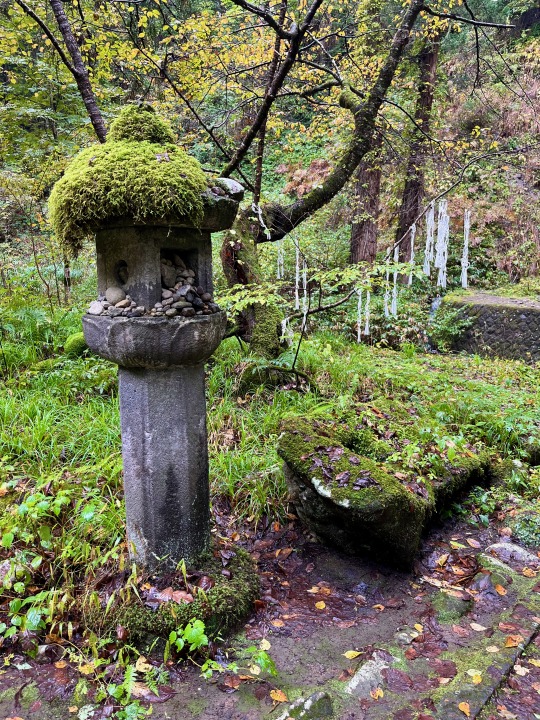
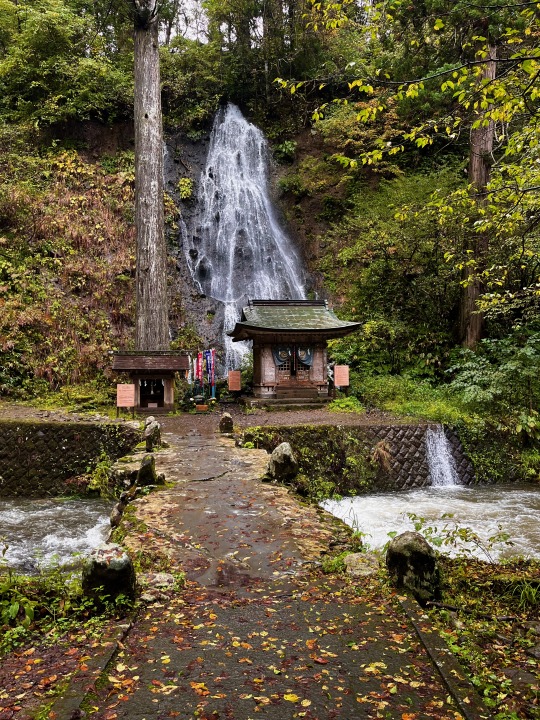
It just looked so beautiful from the bridge. I really liked going to see that.
And look, a little Fudō Myō-ō. (He's an important deity in Shugendō.)

The Grandpa Cedar, or 1000yo cedar tree.

After this, I moseyed back to were Dad was waiting in the car (and... almost passed out lmao) and we drove to the top of the mountain to where the main shrine is.
Right before I walked into the shrine, though, I stopped at the little museum they had there about the Dewa Sanzan.
Giant tengu masks! (Note, these were HUGE, much larger than they look here.)

And I guess I at least got to see a model of the pagoda lmao.
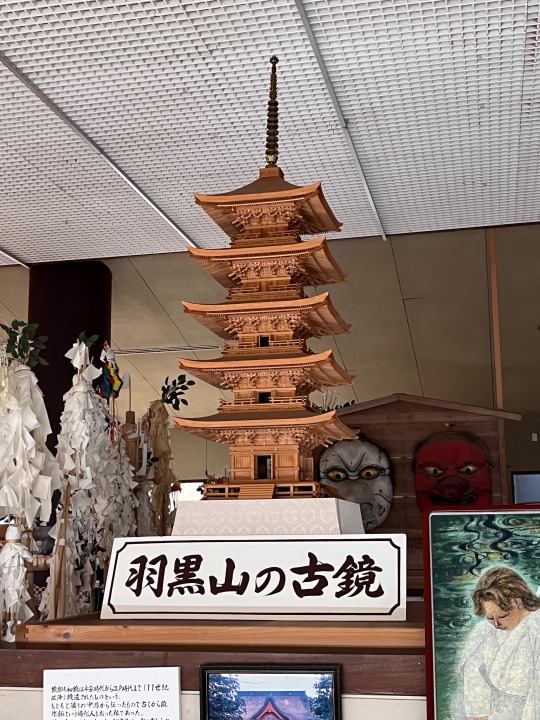
Truthfully, this museum wasn't that huge. Most of it was swords, which... I'm sorry, all look identical to me. It did have some yamabushi outfits, regalia, ritual objects, etc., but the Shugendō museum had better examples, imo. I'll have some better photos from the Shugendō museum later on.
Anyway, on to Ideha Shrine.
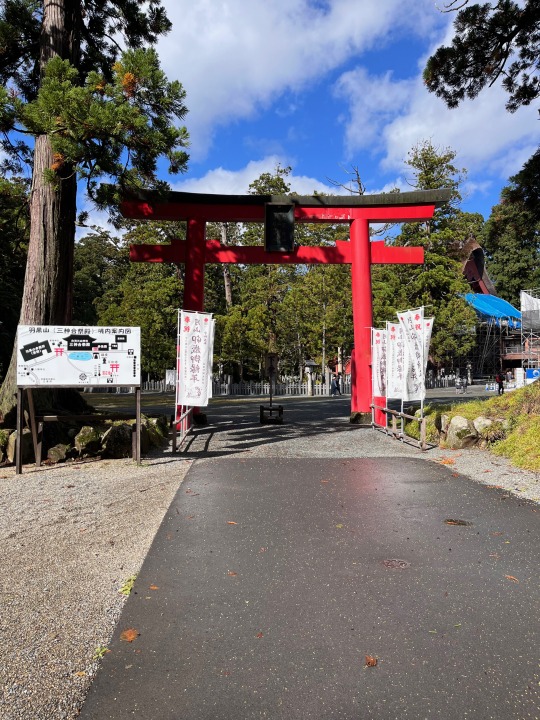
The cedars were really beautiful out here, and you can see some of the subshrines behind them.
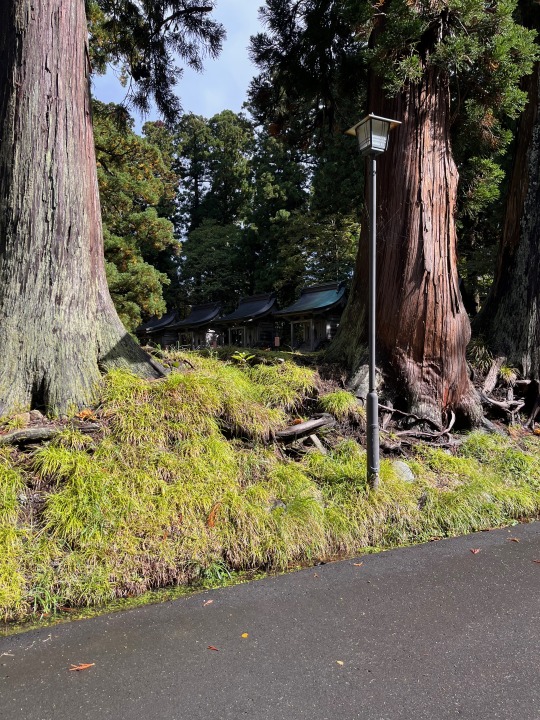
It was interesting, because people had lodged coins in the bark of a lot of these trees. I had just read some research on wishing trees in Scotland, so I annoyed everyone by taking lots of photos here.


Ah, more Jizos... and more toys...

There was a really neat little building here, but I couldn't get pictures because there was a service going on. It was wild, though. There was the most beautiful painting on the ceiling of the hall and lots of people walked in but no one looked up. And I tried to point up (didn't want to talk during the service) but no one paid attention.
Oh well. Their loss.
Anyway, finally went and visited the main hall and got my goshuinchō taken care of.
(Would anyone be interested in a post about goshuinchō? They're basically books that you get signed/stamped at shrines and temples, and some are quite beautiful.)
There was still hail all over the ground here and it was super crowded, so it was hard to get photos of a lot of the buildings. Still, I managed to get one from a bit further away.

It actually has an old-fashioned thatched roof, which was really neat to see up close. Also, it's freaking HUGE. It's just hard to tell from across the lake. That's part of why it was so hard to take a good photo from closer. It's SO BIG. One of the bigger halls I've ever seen at a Shinto shrine. There were like multiple big halls in there having services.
Why multiple halls? Well, like I said, this shrine stands in for all three mountains for people who can't get to all three. So there were different halls for each mountain/shrine.
All in all, really lovely. I was surprised to see all the tour buses, though! That would go away quickly as we approached the other mountains.
Before I get to that, though, have some photos from the Shugendō museum down at the base of the mountain!
This is the clothing that a yamabushi would wear on the mountain (with a tengu mask over the face of the dummy, haha)

And here's Fudō Myō-ō again.

There are tons of photos I could show off of this little museum, but I'm not sure if others will find them all as interesting as I do...? So here's one fairly spectacular one of a life-size diorama of a ritual.

So then we were out of there, driving out towards Gassan and Yudonosan. A couple photos of Gassan from the road... (Just peeking out in the background if you zoom in on the second.)
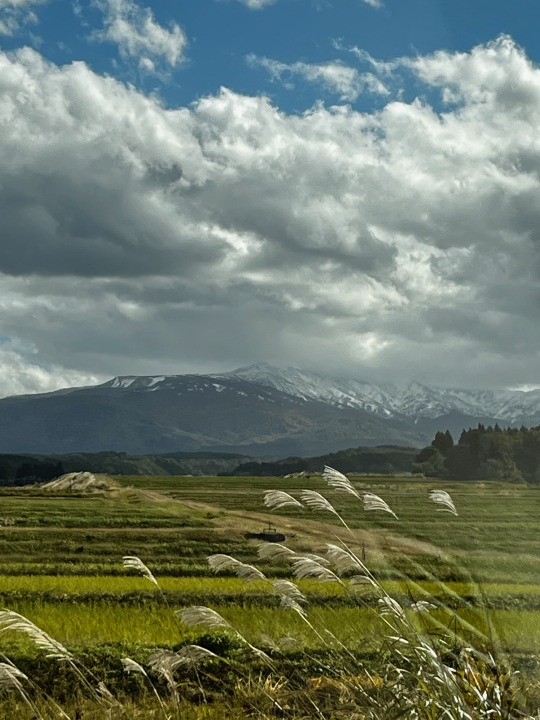

You can probably see why it's closed. It was super snowy already in October, so it's just not safe for most hikers.
Now... you may be wondering why we drove towards Yudonosan but I did not actually get to go to the shrine there.
Frankly, part of it is just that I was going pretty slow that day. I hadn't slept much the night before (my dad...... snores a lot lmao) and I wasn't feeling great so I was kind of white-knuckling it through these climbs. A lot of walking isn't easy for me on a good day, and this wasn't a great day. So it took me a lot longer to get through Hagurosan and the museums than I'd anticipated.
(And... again, I had actually scheduled us another day that we kind of lost to the weather. ;; The museums had been closed, too.)
But what really put it over the edge to "we will miss our train if we go to Yudonosan" was how dang long it took at Dainichibou.
Now, I've talked a bit about sokushinbutsu, living Buddha, and self-mummifying monks before a couple times, so I'll just point you to that.
(Extreme trigger warning for discussions of death, religious suicide, self-starvation, self-poisoning, etc., though there are no photos. That said, if you do wish to google photos of Shinnyokai, I do think there's something kind of beautiful about him.)
Anyway, I was really, really lucky to have the experience that I did at Dainichibou. And... obviously, I do not have photos.
But it did take uhhh a couple hours longer than expected. I wasn't expecting an entire history lesson from a monk when we walked in. I was lucky to get it!!! And to get to spend so much time with Shinnyokai. But it did prevent us from going to Yudonosan.
All that said... a few more photos.
First, this photo that had me in fucking hysterics. It's pointing the way to Dainichibou with a super cutesy graphic that does not at all prepare you for what's actually inside that temple.

Second, some exterior photos of the temple grounds.
(These were taken by Dad while I was getting my goshuin, my phone died RIP.)




And finally, my pride and joy, the one thing I really, really wanted to get for myself if at all possible in Japan this trip... The omamori of Dainichibou Temple.

Like... I won't lie, it's a bit of a morbid "souvenir". But there also feels like there's something deeply meaningful to it. It makes me feel like I'm participating in a ritual that a person literally gave their life to complete, you know?
If you didn't read that explanation post of what's in Dainichibou, then you may not know why this is special.
(again, content warning for death)
The object of veneration at Dainichibou is a sokushinbutsu, or a monk who mummified himself while he was still alive so he could become a living Buddha/bodhisattva and bring salvation, good health, and enlightenment to humans still on earth.
It's said that he pulled out his own eye during his lifetime to help end a plague, and... well, idk about that. Stories are perhaps more powerful than most humans are. But I did feel some kind of way seeing the statue of Kannon that the monks had "defaced" there, pulling out one of her eyes so she would match the mummified corpse they have in their back room.
Shinnyokai sits up in eternal repose, and you can meditate with him. And, when you leave, you can buy an omamori. Now, omamori are charms that you can buy at pretty much any shrine or temple. They are small charms, often cloth bags with something inside them. You don't open them; seeing what's in there isn't the important part. It's usually a sutra written by one of the monks or something similar.
But the omamori at Dainichibou is something much more materially significant, I suppose. Every six years, Shinnyokai's brightly colored robes are changed. When that happens, the old robes are cut up, and scraps of them are placed into the omamori that will protect pilgrims that come to visit him, pray with him, and listen to his story.
I feel like there's a fine, fine line between dark tourism (which I'm usually not a fan of) and joining in a ritual like this. But... I can't help but respect this man's sacrifice, you know? The act of sokushinbutsu takes ten years, and those ten years are agonizing. I don't think I've ever wanted anything that much. And while I may not ever know his entire life story or why he chose to do it for sure, I do know that he did it.
So... it feels like if I'm going to visit him, I need to respect that choice and allow the monks there to try and protect me in the best way they know how -- which is teaching me the history of the temple, (being shocked that I already knew what honji suijaku is, lmao), stamping my goshuinchō, introducing me to Shinnyokai, and letting me take a piece of him home with me.
So while I have many omamori, that's the one that I really treasure most. There's really no other like it, and I know that a man literally died to give it to me.
That's heavy, y'know?
And while I didn't actually get to visit all three shrines, I did actually visit places associated with all three. Hagurosan, obviously, I actually visited. Gassan is attached, actually, to Hijiori Onsen. There's a trail from that onsen to the mountain that yamabushi have used for centuries, and I bathed in the sacred water that flow from that mountain's base. And Dainichibou, obsessed with death and rebirth and attaining immortality, in a way, is at the food of Yudonosan.
So while I haven't given up on doing a true Dewa Sanzan pilgrimage one day, I do actually feel pretty satisfied with what I managed to do while I was there this time. I had some really incredible experiences. Drinking the same healing waters pilgrims have for centuries and communing with nature and praying with yamabushi and visiting a sokushinbutsu and eating some -- god, truly vile pickled mushrooms. lmao
I had a good time and I learned a lot, even a few lessons that I wasn't expecting. So I think it was a really, really valuable trip for me.
I grew!
(...........and then I took a train to Disneyland. lmao)
6 notes
·
View notes
Photo
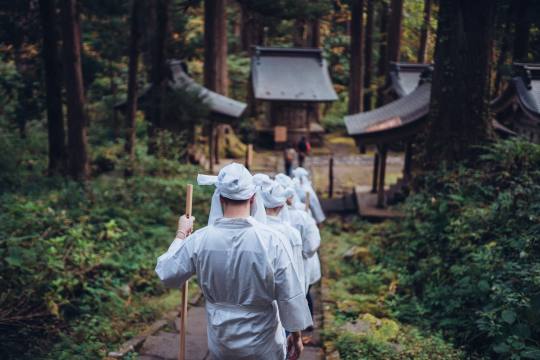



Yamabushi Experience, Yamagata Prefecture by Tohoku Tourism
In the northern mountain regions of Yamagata Prefecture, three particular peaks (Mt. Haguro, Mt. Gassan & Mt. Yudono) collectively known as "Dewa Sanzan" have been considered sites of rebirth by pilgrims and wanderers for over 1,500 years.
Followers of Shugendo , a mixture of old Shinto mountain worship, local folk worship and Buddhism, come to Dewa Sanzan to practice spiritual rebirth through self-discipline and self-improvement. These ascetic practitioners are called, "Yamabushi". You, too, can experience these ascetic trials (grueling mountain treks, takigyo - meditation while sitting under a waterfall, and himatsuri - leaping over fire). It is believed that one can only attain enlightenment by eschewing modern life, abstaining from worldly pleasures, and re-connecting with nature. It is here in these mountains, surrounded by immense beauty and solitude, that your trial as a Yamabushi will begin.
There is no need to be a follower of Shugendo to participate. Regardless of your beliefs, participating in the Yamabushi experience will be a positive experience. Even during the pandemic, you can try the “himatsuri” experience. Make a reservation now and come see nature at its finest.
For more information: https://www.tohokukanko.jp/en/attractions/detail_2016.html
Photos by: TheHiddenJapan
#yamabushi#yamabushi experience#yamagate prefecture#tohoku region#tohoku tourism#the hidden japan#discovering japan#exploring japan#pilgrimage in japan#hiking in japan#shugendo#dewa sanzan#buddhism#japan
17 notes
·
View notes
Video
Sotoba by Finlay Stewart
Via Flickr:
Memorials and, for some reason, toy windmills.
2 notes
·
View notes
Text
An Interview with Haruki (imaginary)

https://stenote.blogspot.com/2020/07/an-interview-with-haruki.html
#Shinto Buddhism#Religion and Culture#Travel Japan#Spiritual Harmony#Meditation of Life#aibou#Churenji Temple#Dewa Sanzan#Sokushinbutsu
0 notes
Photo

Haguro-san, Dewa-sanzan, Dewa (Yamagata), Japan
0 notes
Photo
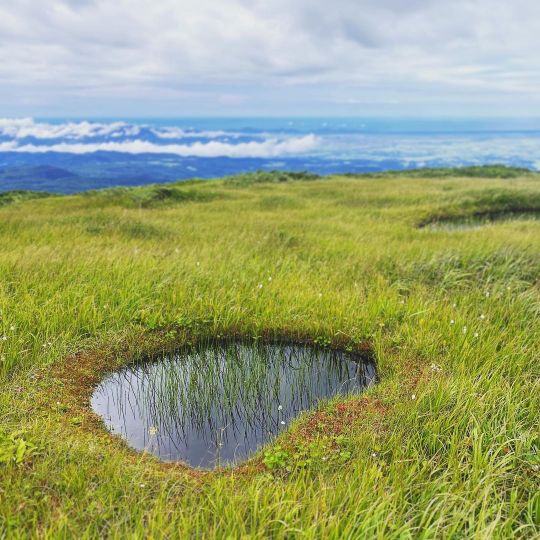
月山 Mt. Gassan 出羽三山 Dewa Sanzan. “Dewa Sanzan “are three sacred mountains in Yamagata Prefecture. #nature #touristspot #beautifullife #iwate #japan (月山) https://www.instagram.com/p/CS552pnBiDd/?utm_medium=tumblr
1 note
·
View note
